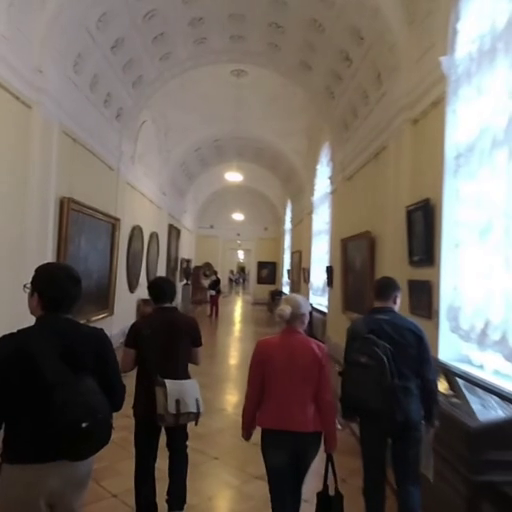How is it made?
Stereoscopic fisheye videos from the internet are an untapped source of high-quality 4D data: (1) there are hundreds of thousands of them, and (2) since they're designed to capture immersive VR experiences, they have wide field-of-view stereo imagery with a standardized stereo baseline, precisely the kind of information that's useful in reconstructing pseudo-metric 4D scenes. These videos contain a pretty even spread of what we might see in everyday life—some examples are shown here:

We process these videos with a careful combination of state-of-the-art methods for (1) stereo depth estimation, (2) 2D point tracking, as well as (3) a stereo structure-from-motion system optimized for dynamic stereo videos. From these methods, we can extract per-frame camera poses, per-pixel pseudo-metric depth from stereo disparity, and long-term 2D point tracks.

We then fuse these quantities into 4D reconstructions, by lifting the 2D tracks into 3D with their depth, and aligning all the scene content by compensating for the known camera motion. This results in temporally consistent, high-quality dynamic reconstructions, with long-term correspondence over time.
This gives us pretty reasonable 4D scenes, but there's still work left to be done. The precision of stereo depth predictions may be limited by the content of the scene (e.g., distant objects seen with small parallax may have a large variance of possible depth values—and can therefore vary signifcantly from one frame to another). This results in jittery or noisy 3D tracks. To compensate for this, we additionally perform an optimization process over the 3D trajectories that removes this noise.







